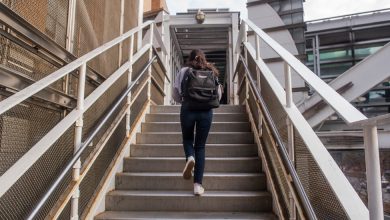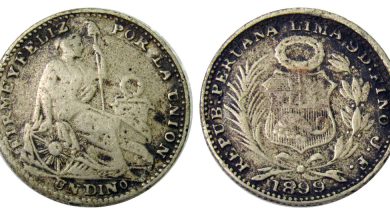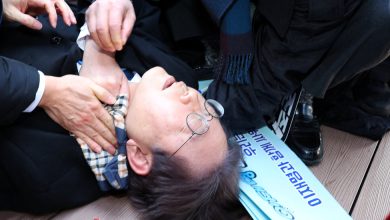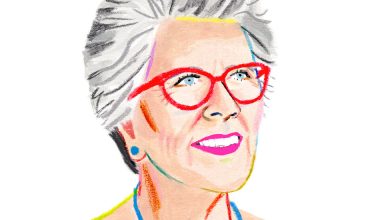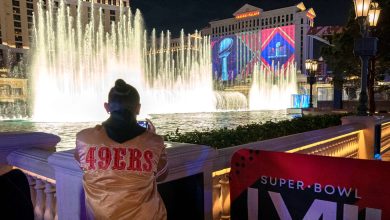‘Nonbinary Runners Have Been Here the Whole Time’

As a middle-distance runner for Columbia University, Jacob Caswell did not feel like they had space to be themself.
Because collegiate track and field events include only men’s and women’s divisions, Caswell, who is nonbinary, competed in men’s races. But they said they felt constrained by gender norms as an N.C.A.A. athlete, unable to question their gender identity or explore self-expression without risking their place on a team.
Road racing is now creating intentional space for runners like Caswell. In late March, Caswell ran the New York City Half Marathon in a new category for nonbinary runners that included 21 entrants. And on April 24, Caswell entered the Brooklyn Marathon — their first marathon — and broke the tape to win the nonbinary division.
“Being able to not even win but just compete as yourself, it’s just been freeing,” Caswell said.
Over the past year, road races across the United States have debuted a nonbinary category, typically with around two dozen or fewer such competitors at each event. Although political debates have led to Republican-backed state laws to restrict transgender athletes’ participation in girls’ and women’s competitions, there has been little discussion about how nonbinary athletes can or should compete in gender-segregated sports.
The nonbinary category in races has not drawn as much public controversy. Most nonbinary runners go unnoticed on race day, running alongside tens of thousands of other amateur competitors. But for many participants, the ability to select a descriptor more accurate than “male” or “female” when registering for a race makes them feel more visible and respected.
Being around transgender and gender-nonconforming runners, Caswell said, “helps me both compete athletically and live more authentically.”
The small turnouts are reminiscent of women’s marathoning a half-century ago. In 1970, there were about 20 known female marathoners in the world, and, in 1972, the Boston Athletic Association, which organizes the Boston Marathon, viewed recording women’s times as “very much an experiment.” Later that year, only six women ran in the New York City Marathon as its first official racers in the women’s category. The race’s first nonbinary field included 16 runners in November 2021.
This year’s Brooklyn Marathon and Half Marathon, organized by New York City Runs, had what was most likely the largest nonbinary field to date with 82 finishers in the division.
“I felt a sense of pride seeing that at the very front, just behind us was more nonbinary people — representing and being out and proud at the race,” said Zackary Harris, who placed second in the half-marathon.
For runners, like Harris, who led their fields, the races also offered an opportunity to win prize money.
In September, the Philadelphia Distance Run became the first organization to offer equal prize money to nonbinary athletes. It was an easy decision, said Ross Martinson, one of the event’s organizers. “We want to have a competitive race and get the best nonbinary runners out there,” he explained.
Last week, New York City Runs gave competitors in every category equal payouts. In the marathon, Hirut Guangul won the women’s race with a time of 2 hours 36 minutes and 20 seconds, Aaron Mora won the men’s race in 2:27:46 and Caswell won the nonbinary race in 2:35:17. In the half-marathon, Lily Anderson won the women’s race with a time of 1:18, Teshome Asfaha won the men’s race in 1:01:47 and Winter Parts won the nonbinary race with a time of 1:12:48. All six runners claimed a cash prize of $5,000.
Few major marathons, which invite the world’s fastest athletes to compete, have made these changes to welcome nonbinary runners in their amateur ranks, and none have incorporated an elite nonbinary field. In March, for example, New York Road Runners offered cash prizes for the top eight amateurs in all three gender categories of the New York City Half Marathon. But since N.Y.R.R.’s elite divisions are invitational and include only men’s and women’s races, the biggest prize purse — $20,000 for top elite finishers — did not extend to the nonbinary amateur field.
And while last fall’s New York City Marathon — which included prize purses in the six figures — allowed runners to register as nonbinary, none of the openly nonbinary finishers were eligible for prizes.
Despite the efforts at inclusivity, a variety of questions and concerns about equity linger. Gender-nonconforming racers have said they felt a lack of recognition for their accomplishments and a lack of attention to their safety and comfort on race day.
Both Caswell and Harris were continually misgendered by race announcers and officials during the Brooklyn Marathon — at the starting line, at the finish and at the awards ceremony. “It was so comically ironic that here we are really trying to celebrate the inclusion of nonbinary runners and they’re doing the exact opposite of that,” Harris said.
Steve Lastoe, the founder of New York City Runs, acknowledged there was more work to be done. And Caswell is eager to help improve experiences for trans and nonbinary runners. They are now forming a committee with Front Runners, a group for L.G.B.T.Q. runners, with hopes of collaborating with race organizers to address these and other issues before future events.
“Nonbinary runners have been here this whole time,” Harris said. “We’ve been forced to run in categories that don’t match our gender identities, and now we’re seeing a shift in sports to actually recognize us.”

